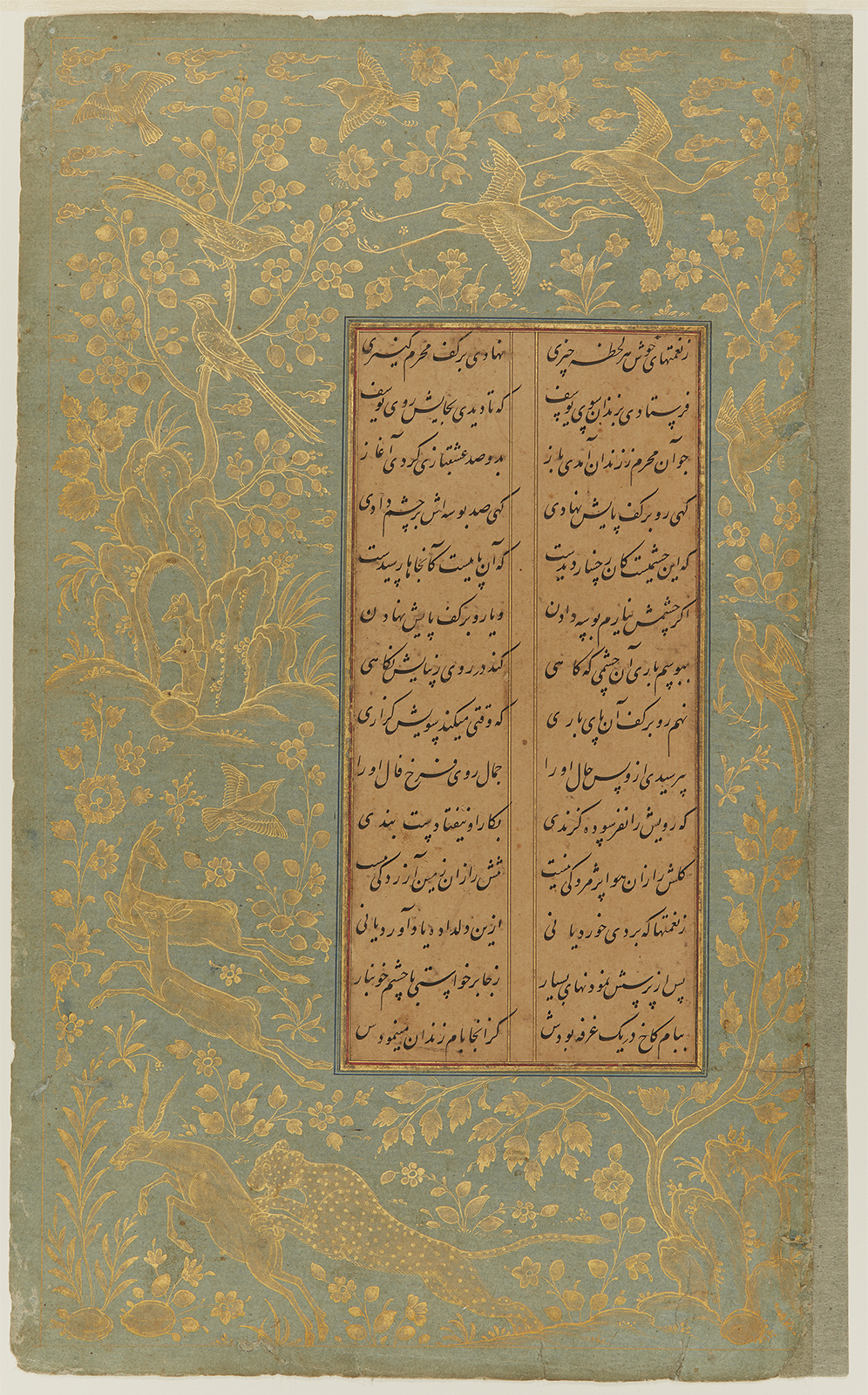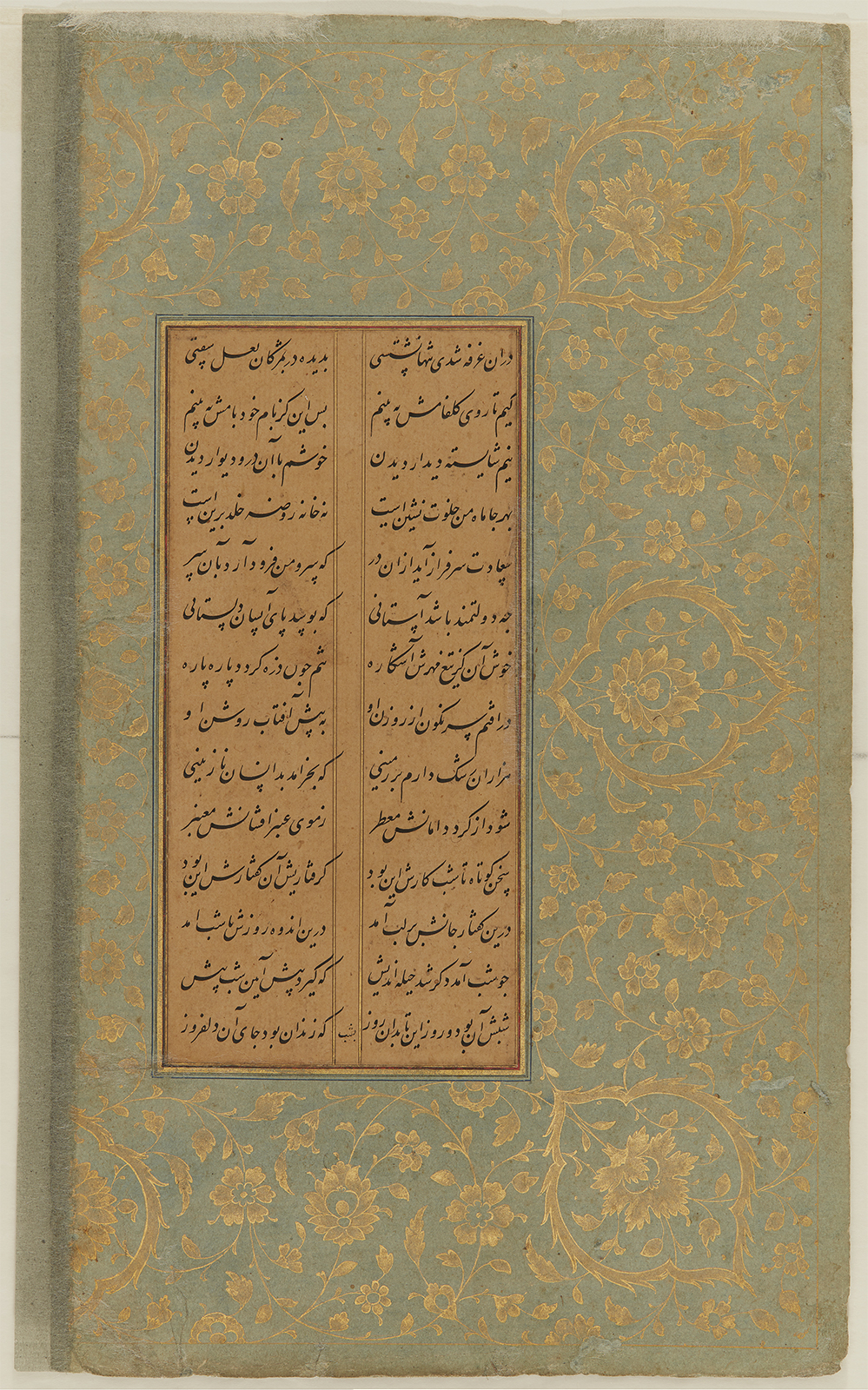Click on the image to zoom
Folio from a manuscript of Yusuf and Zulaykha
- Accession Number:AKM229
- Creator:Author: Jami, Persian, 1414 - 1492
Scribe: Mahmud b. Ishaq al-Shihabi, died 1583 - Place:Uzbekistan, Bukhara
- Dimensions:26.4 cm x 15.5 cm
- Date:1556-57 CE/964 AH
- Materials and Technique:gold and ink on paper
This folio belongs to a manuscript copy of Yusuf and Zulaykha, a poem written by the author Jami based on the story of Joseph and Zulaykha, the wife of Potiphar. It formed part of Jami’s collection of seven narrative poems known as the ‘Seven Thrones’ (Haft Awrang), but was popular enough to also be copied in manuscripts on its own. Here, the calligraphy has been done by Mahmud b. Ishaq al-Shihabi, who signed his name and dated the completion of his work in the hijri year 964 (1557-58 AD). The page on which he signed his name, as well as an additional 54 folios from the manuscript, are now in the Museum of Islamic Art in Berlin.
Further Reading
While the calligraphy is well executed, it is the borders of the manuscript that really capture the viewer’s attention. Arranged around the central text panel, the colored papers of the borders have been embellished with gold illumination including plants, trees, birds and animals. It has been proposed that these borders were added in India, after the discovery of seal impressions hidden on the final folio. Study of these seals show that at one time the manuscript belonged to ‘Itimad Khan, a courtier and father-in-law to the Mughal emperor Shah Jahan (r. 1628-58). Centuries later, the manuscript passed through the hands of Friedrich Sarre (1865-1945), one of the most prominent scholars of Islamic art.
— Marika Sardar
Note: This online resource is reviewed and updated on an ongoing basis. We are committed to improving this information and will revise and update knowledge about this object as it becomes available.




